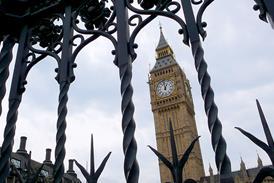Do not be surprised if the 2014 equivalent of the emergency care fund is directed at shoring up the NHS’s performance in planned care
The news the NHS waiting list for planned care is hovering under 3 million is cause for both celebration and caution.
Celebration because the NHS is shouldering the burden of higher demand in a period of financial constraint and still broadly achieving quality and access standards.

‘The idea CCGs would be able to reduce demand on acute trusts seems like a long term bet at best’
Caution is necessary because HSJ’s analysis shows that since the turn of the decade the NHS’s success in dealing with waiting lists backlogs has reduced and if the trend continues that ability could vanish within a year or two.
Already some trusts are “stretching” waiting times for “non-urgent” patients as de-layered administration teams struggle to maintain performance. Even the best-performing trusts are victims of their own success, with increased referrals making patient flow problems worse.
Growth in GP referrals has slowed, but the idea clinical commissioning groups would be able to reduce demand on acute trusts seems like a long term bet at best and one more likely to be blown away by the demographic winds of change. Do not be surprised if the 2014 equivalent of last autumn’s emergency care fund is directed at shoring up the NHS’s performance in planned care.



























3 Readers' comments